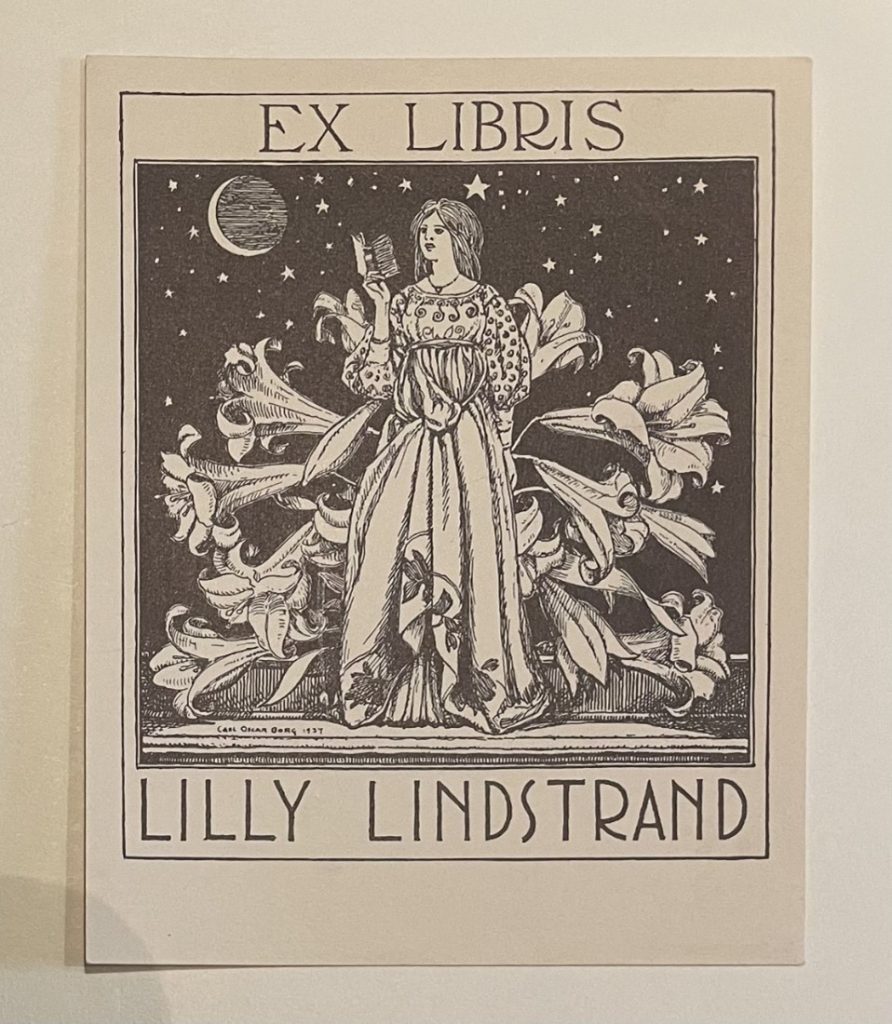By Klara Pokrzywa, MHS Library Assistant
I first discovered the Ruby V. Elliott bookplate collection by reading a blog post from our cataloger Mary Yacovone. The charming ex libris drawings immediately drew me in, as they seemed a fascinating aspect of book ownership that has largely disappeared among the general public.
When I began looking through the bookplates, I was struck by how complex and personalized each design was. Some bookplates incorporated aspects of the owner’s name, interests, or profession, while others seemed more opaque, although just as unique. A few bookplates I examined at random seemed to share a common style, and I quickly noticed that these were all done by the same artist, Carl Oscar Borg. There’s even a bookplate he designed for himself that depicted a man drawing on a cave wall, which seemed like an appropriate design for an artist.
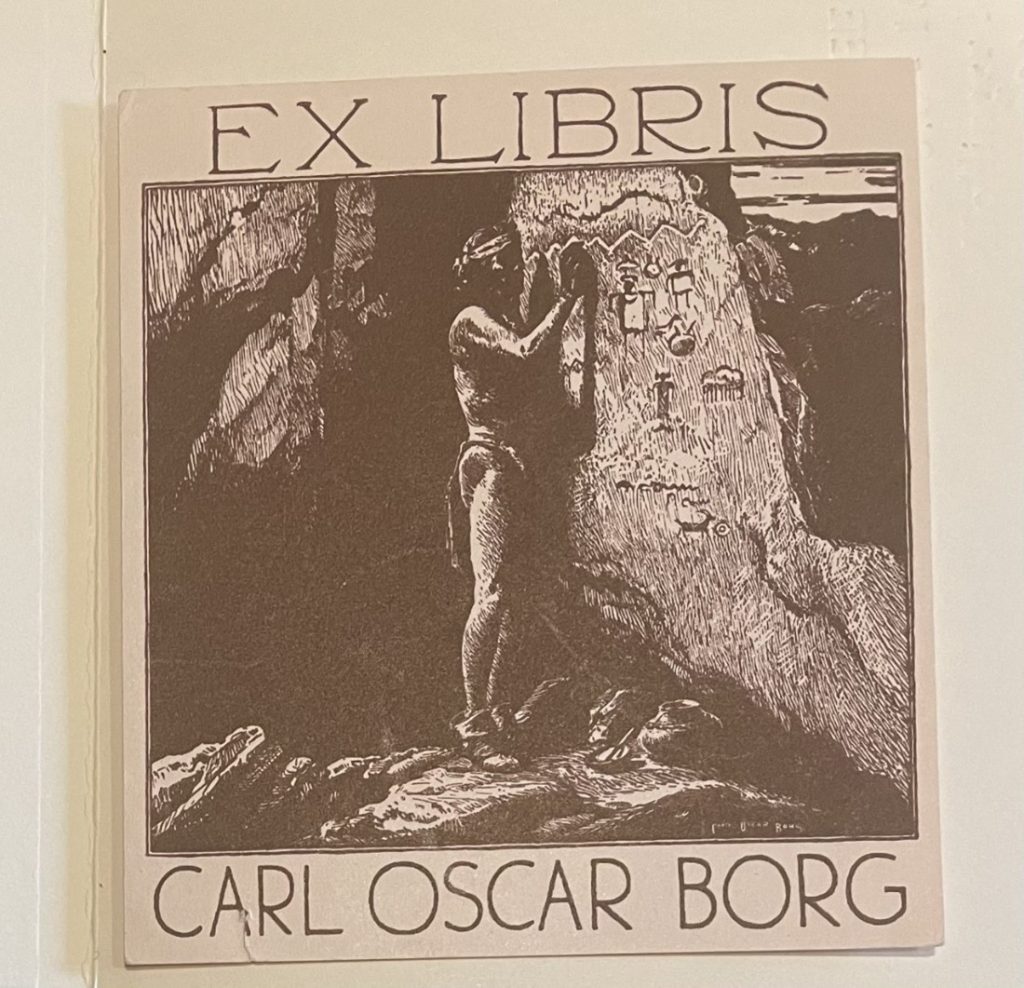
Borg’s work is noted in the Elliott collection’s finding aid, and with good reason – there is a whole slew of Borg-designed bookplates in this collection. Many of them share the same basic layout: large sans-serif text with the owner’s name and “ex libris” framing square woodcut-style drawings of realistic scenes. Others riff on this formula a little, playing with font size or combining multiple symbols in composite images that represent different aspects of their owners’ lives. Two of my favorite bookplates in the collection are designed by Borg: one for Madeline Borg, which depicts a cute little cat on a bookshelf, and one for Reginald Stanley Lawson, which depicts a huge planet suspended in a starry sky. Not only are these designs particularly beautiful, but they also indicate a very contemporary taste for cats and space in booklovers of the past!
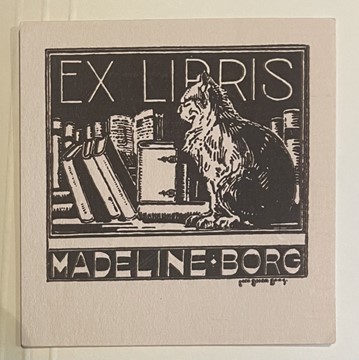
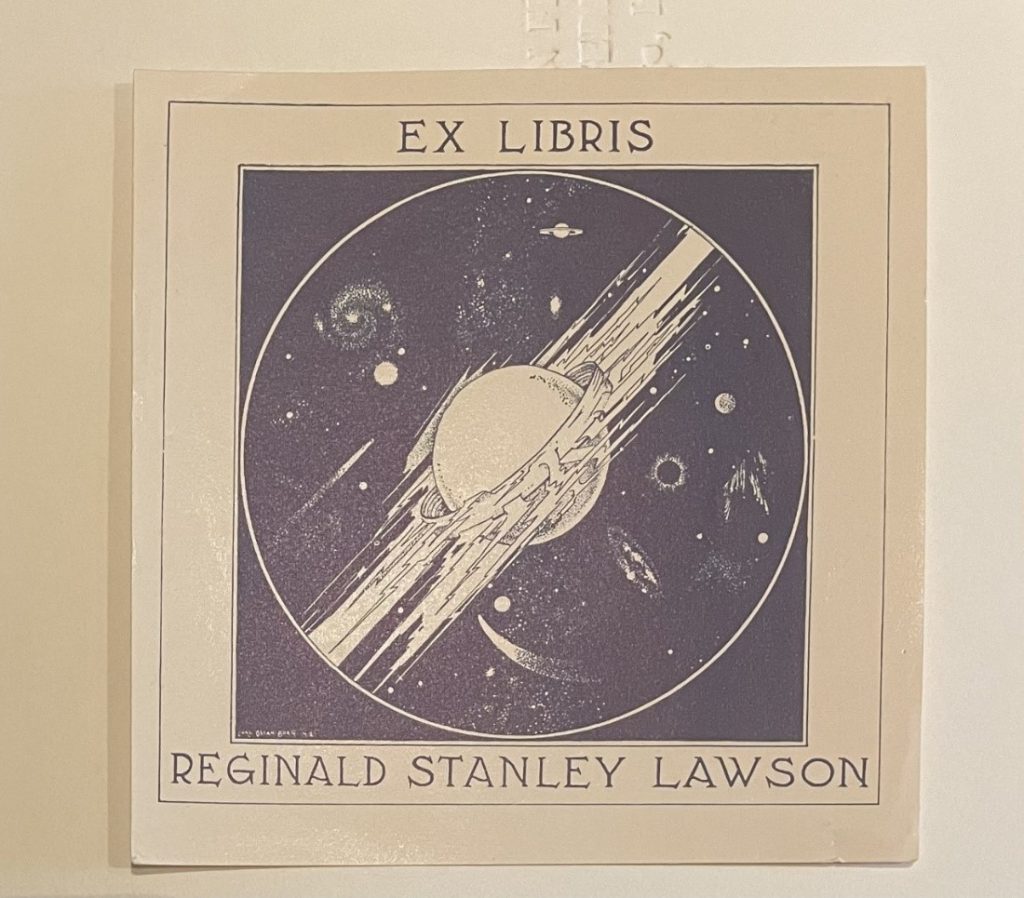
I turned to the Library and Archives at the Autry in Burbank, California, which holds Borg’s personal papers, to learn more about him (the finding aid for his papers is available through the Online Archive of California). According to the Autry, Borg was a Swedish-born artist who moved to the US and received patronage from Phoebe Hearst. Hearst paid for his artistic education, which allowed him to study and move all over the world. Borg’s true interest, however, was in depicting the American West. A large portion of his artistic output was the result of his time living in California’s Navajo and Hopi communities, whose cultures made a deep impression on him.
So how did Borg, a Swedish artist who lived in California, end up at the MHS? The answer is in the collection itself: a 1950 letter to Ruby Elliott from Bill Blachshear, a bookseller in California, provides a record of Blachshear sending many of Borg’s bookplates to Elliott for her collection.
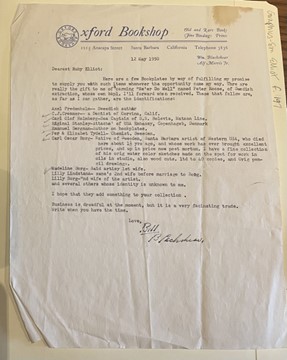
The letter elucidates Borg’s relationship to some of the people he made bookplates for, such as his marriages to first Madeline Borg and then Lilly Borg (previously Lilly Lindstrand; Borg made separate designs for her before and after their marriage to reflect the name change). Blachshear also documents some colorful details about the man who gave him Borg’s bookplates, calling him a “carming [sic] ‘Ne’er Do Well’.” It’s great to see that this document survived and stayed with the collection – it makes the bookplates that much more alive and personal!
I’ll finish this by including a final bookplate of Borg’s: the one he designed for Lilly Lindstrand before marrying her. This plate seems particularly symbolic and personalized: a graceful woman is surrounded by lilies and reading a book. What better way to represent Lilly, who must have loved to read?
